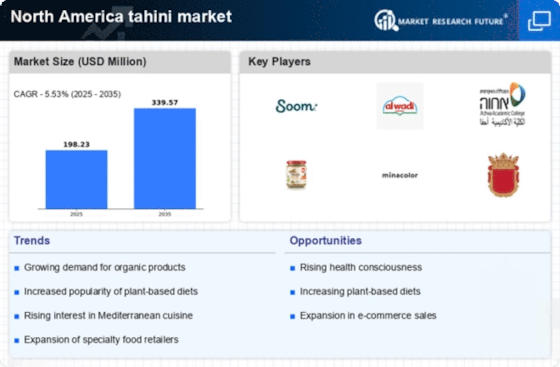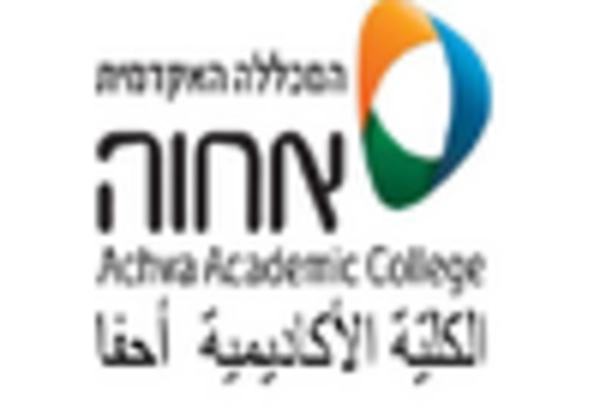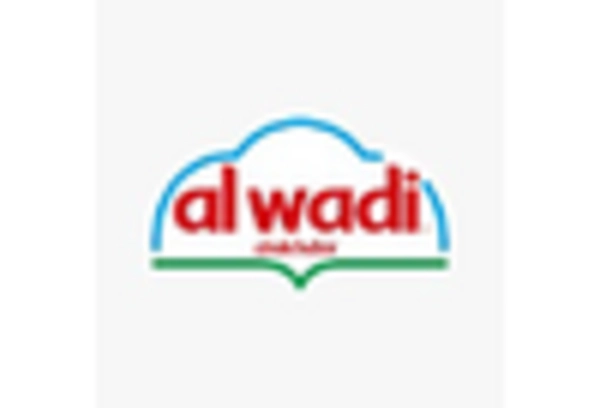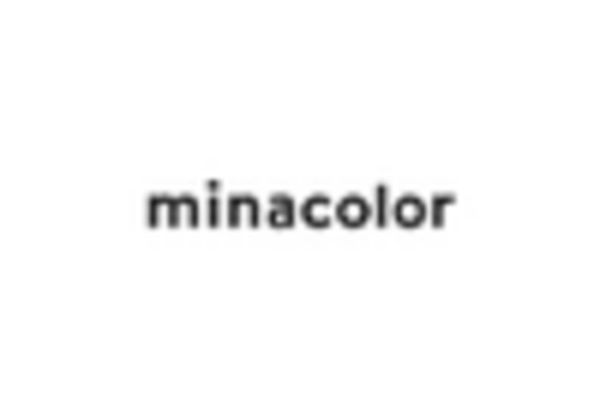Culinary Innovation and Trends
Culinary innovation plays a pivotal role in shaping the tahini market. Chefs and home cooks alike are increasingly experimenting with tahini in various recipes, ranging from dressings to desserts. This versatility is driving its popularity in North America, where consumers are eager to explore new flavors and cooking techniques. The market for specialty food products, including tahini, has seen a growth of approximately 20% over the past few years, reflecting a shift towards gourmet and artisanal ingredients. As culinary trends evolve, tahini is being incorporated into diverse cuisines, enhancing its visibility and demand. The tahini market is likely to benefit from this trend, as innovative recipes and cooking shows continue to highlight its unique flavor profile and health benefits, encouraging consumers to integrate it into their daily meals.
Expansion of Distribution Channels
The expansion of distribution channels is a critical driver for the tahini market. With the rise of e-commerce and online grocery shopping, consumers in North America have greater access to a variety of tahini products. This shift is facilitating the growth of the market, as consumers can easily purchase tahini from the comfort of their homes. Additionally, traditional retail channels are also adapting to meet consumer demand, with many grocery stores increasing their offerings of specialty products, including tahini. The convenience of online shopping is expected to contribute to a projected growth rate of 15% in the e-commerce food sector by 2026. As distribution channels continue to expand, the tahini market is likely to experience increased visibility and accessibility, ultimately driving sales and market penetration.
Sustainability and Ethical Sourcing
Sustainability concerns are becoming increasingly relevant in the tahini market. Consumers in North America are showing a preference for products that are ethically sourced and environmentally friendly. This trend is reflected in the growing demand for organic and sustainably produced tahini, which appeals to environmentally conscious consumers. The organic food market in North America is projected to reach $70 billion by 2025, indicating a significant shift towards sustainable consumption. Brands that prioritize ethical sourcing and transparent supply chains are likely to gain a competitive edge in the tahini market. As consumers become more discerning about their food choices, the emphasis on sustainability may drive innovation and improvements in production practices, ultimately benefiting the tahini market as a whole.
Rising Demand for Plant-Based Products
The increasing consumer inclination towards plant-based diets is a notable driver in the tahini market. As more individuals adopt vegetarian and vegan lifestyles, the demand for plant-based protein sources has surged. Tahini, being rich in protein and healthy fats, aligns well with these dietary preferences. In North America, the plant-based food market is projected to reach approximately $74 billion by 2027, indicating a robust growth trajectory. This trend is likely to bolster the tahini market, as consumers seek nutritious alternatives to traditional animal-based products. Furthermore, the health benefits associated with tahini, such as its high calcium and magnesium content, further enhance its appeal among health-conscious consumers. Thus, the tahini market is poised to benefit from this growing demand for plant-based options, potentially leading to increased sales and market expansion.
Increased Awareness of Nutritional Benefits
The tahini market is experiencing growth due to heightened awareness of its nutritional benefits. Consumers are becoming more informed about the health advantages of tahini, which is rich in essential nutrients such as protein, fiber, and healthy fats. This awareness is particularly pronounced in North America, where health trends are increasingly influencing purchasing decisions. Reports indicate that approximately 60% of consumers actively seek out products with health benefits, which positions tahini favorably in the market. Additionally, the rise of social media and health influencers has contributed to the dissemination of information regarding tahini's benefits, further driving its popularity. As consumers prioritize health and wellness in their diets, the tahini market is likely to see sustained growth, as more individuals incorporate this nutrient-dense ingredient into their meals.


















Leave a Comment